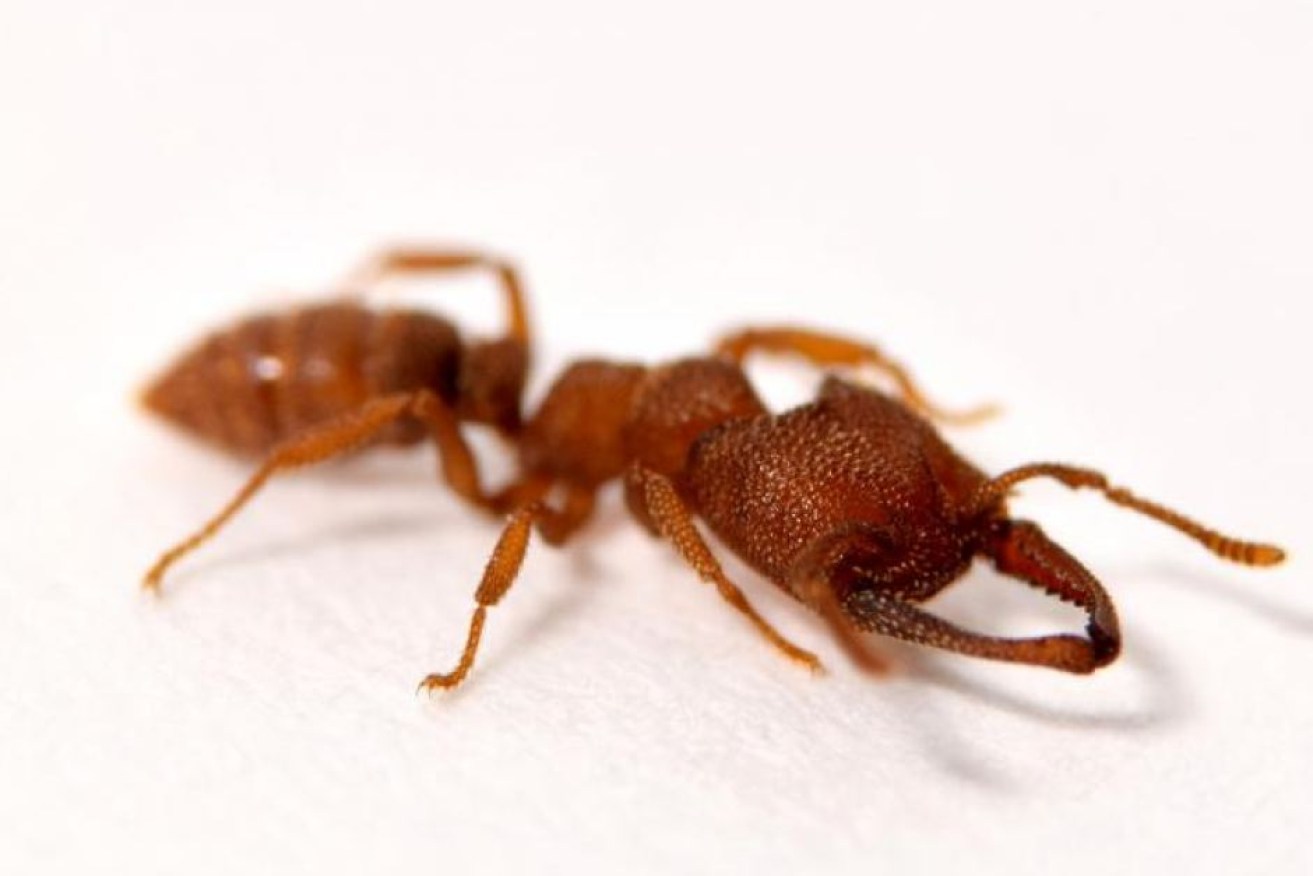The Dracula ant, nature’s fastest mover on record, can snap its jaws at 320kmh

The fastest-known animal movement belongs to the dracula ant. Photo: Adrian Smith
Move aside cheetah: The world’s fastest-moving animal is an ant. Yes, you read that correctly.
According to a study by the University of Illinois the Dracula ant, also known as Mystrium camillae, can snap its jaws 5000 times faster than the blink of a human eye at 320 kilometres per hour, making it the fastest-known animal movement on the planet.
They can be found in Australia, tropical Africa and south-east Asia.
Researchers say the tiny blood-sucking creature powers its mandibles by pressing the tips together, spring loading them with internal stresses that release when one mandible slides across the other – similar to a human finger snap.
“These ants are fascinating as their mandibles are very unusual,” said animal biology and entomology professor Andrew Suarez, who helped lead the study.
“Even among ants that power-amplify their jaws, the Dracula ants are unique. Instead of using three different parts for the spring, latch and lever arm, all three are combined in the mandible.
“The ants use this motion to smack other arthropods, likely stunning them, smashing them against a tunnel wall or pushing them away. The prey is then transported back to the nest, where it is fed to the ants’ larvae.”
Fredrick J. Larabee, a postdoctoral researcher at the Smithsonian National Museum of Natural History, also led the study.
“Scientists have described many different spring-loading mechanisms in ants, but no one knew the relative speed of each of these mechanisms,” he said.
“We had to use incredibly fast cameras to see the whole movement. We also used X-ray imaging technology to be able to see their anatomy in three dimensions, to better understand how the movement works.”
The team also conducted computer simulations of the mandible snaps of different castes of Dracula ants to test how the shape and structural characteristics of the mandibles affected the power of their snap.
“Our main findings are that snap-jaws are the fastest of the spring-loaded ant mouthparts, and the fastest currently known animal movement,” Mr Larabee said.
“By comparing the jaw shape of snapping ants with biting ants, we also learned that it only took small changes in shape for the jaws to evolve a new function – acting as a spring.”
–ABC








